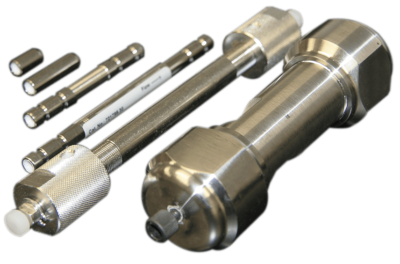 You are at the end of the run, maybe the end of the workday, so now what do you do with that column you just used? Do you leave it on your system? Do you disconnect it from the system, and simply put it back in the drawer? Is it just overnight storage rather than a brand-new assay the next business day, or is it a longer-term storage?
You are at the end of the run, maybe the end of the workday, so now what do you do with that column you just used? Do you leave it on your system? Do you disconnect it from the system, and simply put it back in the drawer? Is it just overnight storage rather than a brand-new assay the next business day, or is it a longer-term storage?
To achieve robust, rugged, and reproducible separations as well as to extend the useful and productive life of your column, you should follow a standard protocol for column maintenance each separation usage cycle.
Overnight Storage, but next day subsequent runs of the same analyte
This can be addressed by using two strategies. First, you can leave the column on the system after the last analysis and the system flush cycle has been applied. We would recommend the highest percentage of your organic mixture to be the solvent left on the system and within the column.
The second approach is to flow your mobile phase at a very low flow rate through the column to the next use day. You can set this to the midpoint of your gradient mix.
Buffered mobile phases may need antibacterial additives such as sodium azide (0.05%) if your organic solvent percentage is low.
If you are using the column for a new analyte and a new application, we recommend the following wash cycle listed below to ensure the column is cleaned, and fully conditioned for your next application.
Longer Term Storage
Using the following cleaning and regeneration cycle before storage of a column. Ensure the column is properly sealed at each end fitting after your cleaning cycle is finished and stored in your drawer. Always mark the column with the last-use data and indicate that it has been processed through your standard cleaning process. If others are sharing columns in your lab, they will thank you for this note on prior use.
The following process is used to regenerate/clean a Silica based Reverse Phase HPLC Column
Run each of these at the appropriate column volumes based on how the column has been previously used, and the number of injections or problematic analytes, in this sequence:
- 20-column volumes Water/ACN (95/5 v-v)
- 20-column volumes Acetonitrile
- 10-column volumes Isopropanol
- 10-column volumes n-Heptane
- 5-column volumes Isopropanol
- 20-column volume Acetonitrile
- Follow with the mobile phase to be used for your separation, until you have a stable baseline.
It’s important to never leave isopropanol on the column so ensure you follow with the ACN and mobile phase steps above. Store columns in 80% ACN and 20% water. Make sure you plug both ends of the column before storing it in the drawer.
For sticky proteins use the following to clean/regenerate a column
- Flush with 30-column volumes of your mobile phase but unbuffered
- Then 20-column volumes of 0.1% TFA in water
- Follow with 20-column volumes of 0.1% TFA in ACN/IPA (1:2)
- Then flush with 30-column volumes of 100% ACN
- Follow with the mobile phase to be used for separation.


